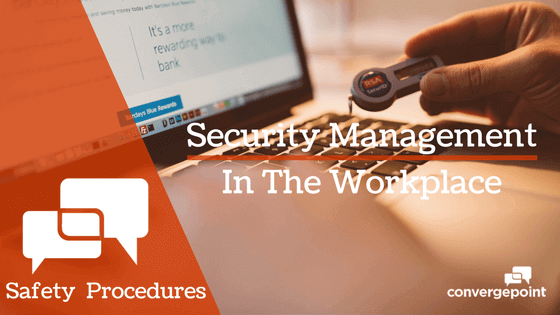Safety Procedures and Employee Training: Security Management in the Workplace

Safety Procedures and Employee Training: Security Management in the Workplace
Security management can be defined as the identification and, thereafter, protection of an organization’s assets and allied risks. Security management is ultimately about the protection of an organisation – all and everything in it. For this to be achieved there needs to be the development and implementation of security-focused policies and procedures that are able to protect said assets. Only then can there be the effective and strategic application of adequate and appropriate resources and needed measures to monitor, minimize and control the probability or possible impact of identified security risks.
Security management is often lumped together with, or as part of, safety management. The word ‘lumped’ is used here both purposefully and advisedly. Although security is undoubtedly integral to the overall safety of an organization or a given site, the two are not mutually inclusive. For one thing, whilst both safety and security are obviously applicable to all, a safety ethos has a focus on the individual, whilst a security ethos focuses on the collective. For another, safety is primarily proactive (i.e. preventative in its aims), whilst security is necessarily both proactive and reactive (i.e. wanting to prevent security breaches, but equally needing to react when breaches occur). The safety professional would do well to remember these subtle differences between the two should security management be part of their portfolio.
Asset protection is not a comfortable fit for many safety managers and professionals if the emphasis is on non-personnel ‘assets’. There may be those that disagree with such an assertion. After all, safety professionals will of course understand and respect the importance of physical assets and infrastructure such as buildings, plant and machinery to an organization. But that is not the ultimate purpose of a safety professional. Their domain is that of people. For too long safety departments were called ‘loss control’ or ‘loss prevention’ with a subliminal emphasis on non-human assets. That is a pertinent reality that any executive management must bear in mind when apportioning security management to the safety team. Always play to your strengths, a safety professional should be reminded: focus on the safety and security of each individual person. Allow the security team, whether in-house or contracted, to focus on physical assets and the collective.
And we in the United States are fortunate. Whilst the scourge of terrorism has grown in recent years and violent breaches of security do occasionally occur, the American workplace continues to be relatively safe and, therefore, relatively secure, especially relative to many other countries. One cannot compare security threats at American workplaces in general to those of other countries where other, far more pervasive security issues threaten organisations on a daily basis. These include countries still recovering from years of terrorism and civil war (like Sri Lanka) or ongoing socio-economic and political upheaval (as in Brazil), not to mention huge levels of violent crime (such as in Colombia, Mexico or South Africa) or an even more palpable threat of terrorism (as European countries like the UK, France or Germany face today).
Ultimately, there are no half measures in security management, just as there is no need to distinguish when referring to ‘safety and security’. But as any safety professional or systems theorist will attest, the greatest asset to any organisation is its people. And the security management system must reflect that. The great Roman philosopher and orator once wrote that, “The safety of the people shall be the highest law”. For any professional involved in security management there is no higher truth than those words.
